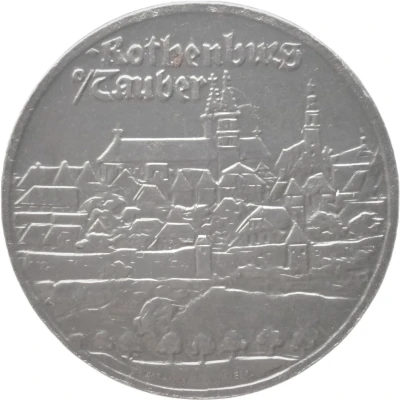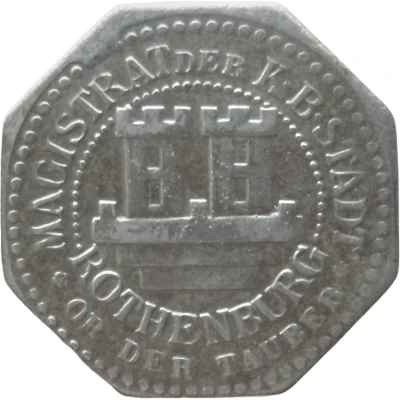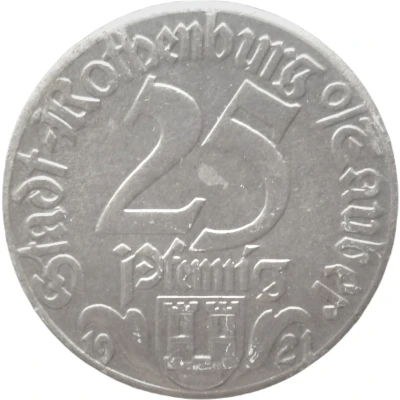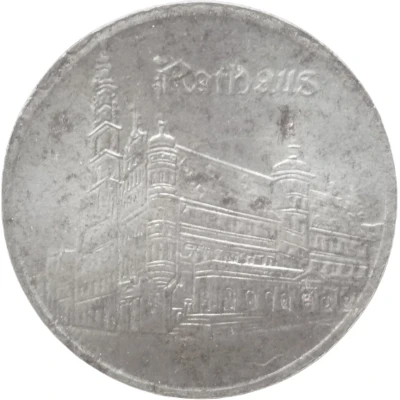


© Willem63 (CC BY-NC-SA)
25 Pfennigs - Rothenburg ob der Tauber Rothenburg o/Tauber
1921 year| Iron | 4.6 g | 24.0 mm |
| Issuer | City of Rothenburg ob der Tauber (Federal state of Bavaria) |
|---|---|
| Period | Weimar Republic (1918-1933) |
| Type | Standard circulation coin |
| Year | 1921 |
| Value | 25 Pfennigs (25 Pfennige) (0.25) |
| Currency | Mark (1914-1924) |
| Composition | Iron |
| Weight | 4.6 g |
| Diameter | 24.0 mm |
| Thickness | 1.4 mm |
| Shape | Round |
| Technique | Milled |
| Orientation | Medal alignment ↑↑ |
| Demonetized | Yes |
| Updated | 2024-10-04 |
| Numista | N#351337 |
|---|---|
| Rarity index | 94% |
Reverse
Image of a city view
Script: Latin (Fraktur blackletter)
Lettering: Rothenburg o/Tauber
Lettering (regular font): Rothenburg o/Tauber
Edge
Plain
Interesting fact
One interesting fact about the 25 Pfennigs - Rothenburg ob der Tauber (Rothenburg o/Tauber) 1921 coin is that it was issued during a time of economic turmoil in Germany, known as the "Inflationary Period" (1914-1924), when the value of the German mark was rapidly decreasing. To combat this, the government issued a new currency, the "Rentenmark," which was pegged to gold and introduced a new coinage system. The 25 Pfennigs coin was part of this new system and was made of iron, a cheaper alternative to traditional metals like silver or gold, to reduce production costs. Despite its humble composition, the coin remains a valuable collector's item today, with some mint conditions selling for hundreds of euros.



